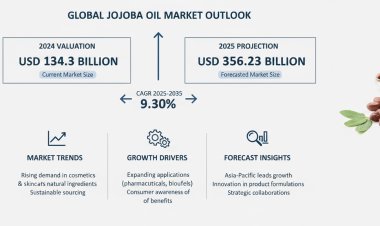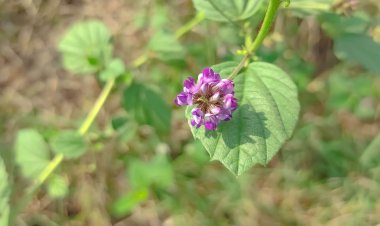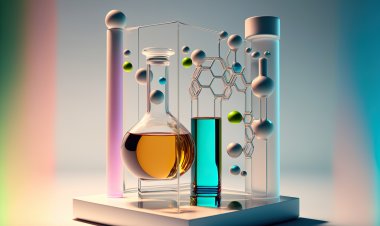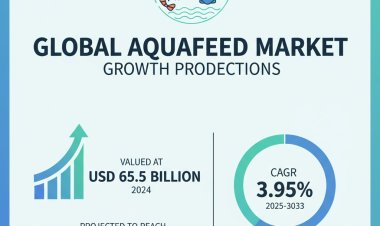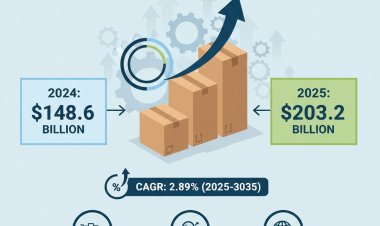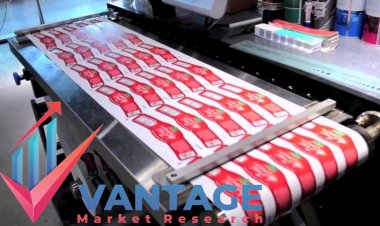Global Crop Protection Chemicals Market: Trends, Opportunities, and Outlook to 2030
Explore the latest trends, growth drivers, challenges, and regional dynamics shaping the global crop protection chemicals market. Discover key players, innovations, and the market outlook to 2030.
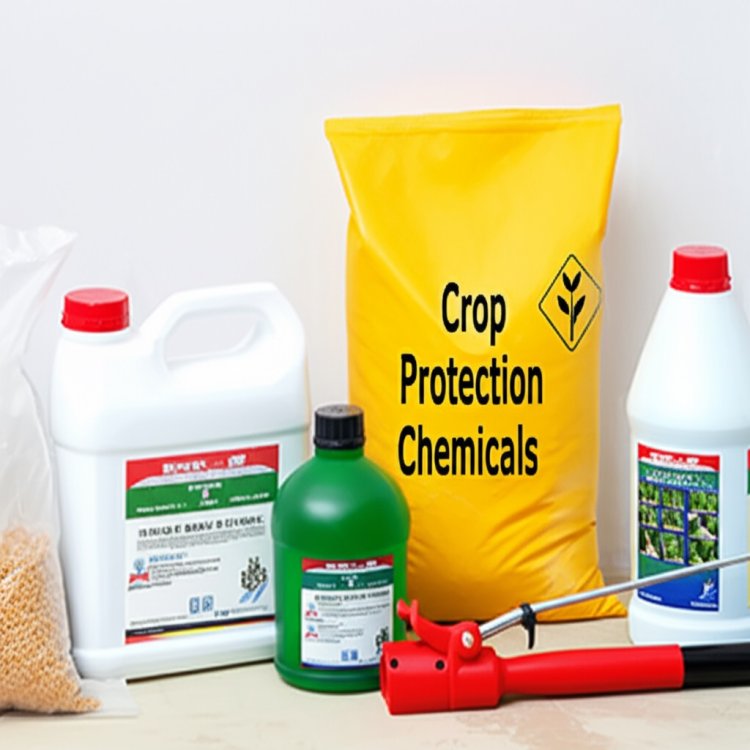
The global crop protection chemicals market is a cornerstone of modern agriculture, playing a pivotal role in ensuring food security and maximizing crop yields. According to analysts at Vantage Market Research, the market was valued at USD 64.64 billion in 2022 and is projected to reach USD 79.37 billion by 2030, reflecting a steady compound annual growth rate (CAGR) of 2.60% over the forecast period. This growth trajectory underscores the increasing reliance on crop protection chemicals to combat the myriad challenges faced by farmers worldwide, including pest infestations, plant diseases, and weed proliferation.
Several key factors are driving the demand for crop protection chemicals. First and foremost is the rising global population, which is expected to surpass 9 billion by 2050. This demographic surge is intensifying the pressure on agricultural systems to produce more food from limited arable land. As a result, farmers are turning to crop protection chemicals to safeguard their harvests and enhance productivity. Additionally, the expansion of commercial agriculture, particularly in developing regions, is fueling market growth as large-scale operations require efficient and effective pest management solutions.
Climate change is another significant factor influencing the crop protection chemicals market. Shifting weather patterns, increased temperatures, and unpredictable rainfall are altering the prevalence and distribution of pests and diseases. For instance, warmer climates can extend the breeding seasons of certain insects, leading to more frequent and severe infestations. This, in turn, necessitates the use of advanced crop protection products to mitigate potential losses. Moreover, the globalization of trade has facilitated the spread of invasive species, further complicating pest management efforts and driving demand for innovative chemical solutions.
Technological advancements in formulation and application methods are also shaping the market landscape. The development of targeted delivery systems, such as controlled-release formulations and precision spraying technologies, has improved the efficacy and environmental safety of crop protection chemicals. These innovations enable farmers to apply chemicals more efficiently, reducing waste and minimizing the impact on non-target organisms.
Despite these positive trends, the market faces several challenges, including regulatory scrutiny, public concerns over chemical residues, and the emergence of pest resistance. Nevertheless, the overall outlook remains optimistic, with ongoing research and development efforts aimed at creating safer, more sustainable crop protection solutions. As the agricultural sector continues to evolve, the crop protection chemicals market is poised to play a critical role in supporting global food production and ensuring the resilience of farming systems in the face of mounting environmental and economic pressures.
Key Takeaways
- The global crop protection chemicals market was valued at USD 64.64 billion in 2022 and is projected to reach USD 79.37 billion by 2030, with a CAGR of 2.60%.
- Rising global population and the need for increased food production are major drivers of demand for crop protection chemicals.
- Climate change is increasing pest prevalence and altering pest distribution, further fueling the need for advanced crop protection solutions.
- Adoption of modern agricultural practices, such as precision farming and integrated pest management (IPM), is creating new market opportunities.
- Government policies and regulatory frameworks are encouraging the use of sustainable and eco-friendly crop protection products.
- Innovation in biopesticides, specialty chemicals, and precision application technologies is reshaping the market landscape.
- The industry faces challenges such as concerns over pesticide residues, food safety, pest resistance, and competition from biotechnology and GM crops.
- North America leads the market with advanced farming practices and strict regulations, while Asia-Pacific and Latin America are experiencing rapid growth due to agricultural expansion.
- Europe’s market is heavily influenced by stringent regulatory frameworks and a strong push towards sustainability.
- Herbicides hold a significant market share, but biopesticides and specialty chemicals are growing rapidly due to their environmental and health benefits.
- Integrated Pest Management (IPM) is gaining traction as a sustainable approach, combining biological, cultural, and chemical methods for effective pest control.
- Major industry players include Syngenta, Bayer CropScience, BASF, Corteva Agriscience, FMC Corporation, and UPL Limited, all focusing on innovation and sustainability.
- The market outlook to 2030 is positive, with continued growth expected due to technological advancements, regulatory changes, and the shift towards sustainable agriculture.
- Strategic recommendations for stakeholders include investing in R&D, expanding sustainable product portfolios, and leveraging digital agriculture tools for integrated solutions.
Market Opportunities and Growth Drivers
The crop protection chemicals market is brimming with opportunities, driven by the adoption of modern agricultural practices, supportive government policies, and continuous innovation in product development. As the global population grows and arable land becomes increasingly scarce, the need for efficient and sustainable crop protection solutions has never been greater.
One of the primary growth drivers is the widespread adoption of modern agricultural practices, such as precision farming, integrated pest management (IPM), and conservation agriculture. These approaches leverage advanced technologies, including GPS-guided equipment, remote sensing, and data analytics, to optimize the use of crop protection chemicals. By applying chemicals only where and when they are needed, farmers can reduce input costs, minimize environmental impact, and improve overall crop health. This shift towards precision agriculture is creating new opportunities for manufacturers to develop specialized products tailored to specific crops, pests, and environmental conditions.
Government policies and regulatory frameworks also play a crucial role in shaping the market landscape. Many countries are implementing initiatives to promote sustainable agriculture and reduce the environmental footprint of chemical use. For example, subsidies and incentives for adopting biopesticides and other eco-friendly products are encouraging farmers to transition away from conventional chemicals. Additionally, stringent regulations on maximum residue limits (MRLs) and the registration of new active ingredients are driving innovation in the sector, as companies strive to develop safer and more effective products that meet regulatory requirements.
Innovation and product development are at the heart of the market's growth. The industry is witnessing a surge in research and development activities aimed at discovering novel active ingredients, improving formulation technologies, and enhancing the efficacy of existing products. The rise of biopesticides, derived from natural sources such as plants, bacteria, and fungi, is a testament to the industry's commitment to sustainability. These products offer several advantages, including lower toxicity, reduced risk of resistance development, and compatibility with organic farming practices. Furthermore, advancements in nanotechnology and biotechnology are opening new frontiers in crop protection, enabling the creation of next-generation products with improved performance and safety profiles.
The increasing prevalence of climate-related challenges, such as droughts, floods, and extreme weather events, is also driving demand for resilient crop protection solutions. Farmers are seeking products that can withstand harsh environmental conditions and provide consistent protection against a broad spectrum of pests and diseases. This has led to the development of stress-tolerant crop varieties and combination products that offer multiple modes of action.
In summary, the crop protection chemicals market is poised for robust growth, fueled by the convergence of technological innovation, supportive policies, and the urgent need to enhance agricultural productivity. Companies that can anticipate and respond to these trends will be well-positioned to capitalize on the myriad opportunities emerging in this dynamic and rapidly evolving sector.
Challenges Facing the Market
Despite the promising outlook for the crop protection chemicals market, the industry faces a host of challenges that could impede its growth and sustainability. Among the most pressing concerns are issues related to pesticide residues and food safety, the development of pest resistance to existing chemicals, and the increasing competition from biotechnology and genetically modified (GM) crops.
One of the foremost challenges is the growing public and regulatory scrutiny over pesticide residues in food products. Consumers are becoming increasingly aware of the potential health risks associated with chemical residues, leading to heightened demand for residue-free and organic produce. Regulatory agencies around the world are responding by tightening maximum residue limits (MRLs) and imposing stricter controls on the use of certain active ingredients. This has created a complex and often costly compliance landscape for manufacturers, who must invest in rigorous testing and quality assurance measures to ensure their products meet regulatory standards. Failure to comply can result in product recalls, export bans, and significant reputational damage.
The issue of pest resistance is another major hurdle for the industry. Over-reliance on a limited number of chemical classes has led to the evolution of resistant pest populations, rendering some products less effective or even obsolete. This phenomenon, known as resistance management, poses a significant threat to crop yields and farm profitability. To address this challenge, companies are investing in the development of new active ingredients with novel modes of action, as well as promoting integrated pest management (IPM) strategies that combine chemical, biological, and cultural control methods. However, the discovery and commercialization of new chemicals is a lengthy and expensive process, often taking more than a decade and costing hundreds of millions of dollars.
Competition from biotechnology and GM crops is also reshaping the market dynamics. The adoption of genetically modified crops with built-in pest resistance, such as Bt cotton and Bt corn, has reduced the need for certain chemical pesticides in some regions. While this has contributed to lower pesticide usage and improved environmental outcomes, it has also eroded the market share of traditional crop protection products. Moreover, the rapid pace of innovation in biotechnology is enabling the development of crops with enhanced resistance to multiple pests and diseases, further challenging the relevance of chemical solutions.
Environmental concerns and the push for sustainable agriculture are exerting additional pressure on the industry. The use of certain chemicals has been linked to adverse effects on non-target organisms, including pollinators, aquatic life, and soil microbiota. This has led to calls for the phasing out of hazardous substances and the adoption of more environmentally friendly alternatives. In response, companies are investing in the development of biopesticides, reduced-risk products, and precision application technologies that minimize off-target impacts.
In conclusion, the crop protection chemicals market must navigate a complex landscape of regulatory, environmental, and technological challenges. Success will depend on the industry's ability to innovate, adapt to changing consumer preferences, and embrace sustainable practices that balance productivity with environmental stewardship.
Regional Market Dynamics
The global crop protection chemicals market exhibits distinct regional dynamics, shaped by differences in agricultural practices, regulatory frameworks, and market maturity. North America, Asia-Pacific, Latin America, and Europe each present unique opportunities and challenges for industry stakeholders.
North America, particularly the United States, remains a dominant force in the crop protection chemicals market. The region is characterized by large-scale commercial farming operations, high levels of mechanization, and a strong emphasis on productivity and efficiency. The adoption of advanced technologies, such as precision agriculture and genetically modified crops, has driven demand for specialized crop protection products tailored to specific crops and pest pressures. Regulatory oversight in North America is stringent, with agencies such as the Environmental Protection Agency (EPA) enforcing rigorous safety and environmental standards. This has spurred innovation in the development of reduced-risk and environmentally friendly products, as companies seek to comply with evolving regulations and meet consumer expectations for safe and sustainable food.
In contrast, the Asia-Pacific region is experiencing rapid growth, fueled by expanding agricultural production, rising incomes, and increasing awareness of crop protection solutions. Countries such as China, India, and Vietnam are investing heavily in modernizing their agricultural sectors, adopting new technologies, and improving access to crop protection products. The region's diverse climate and crop portfolio present unique challenges, including the prevalence of tropical pests and diseases. Government initiatives to promote food security and rural development are driving market expansion, while efforts to harmonize regulatory standards are facilitating the entry of new products and technologies.
Latin America, led by Brazil and Argentina, is another key growth market for crop protection chemicals. The region's vast agricultural landscapes and favorable climate conditions support the cultivation of a wide range of crops, including soybeans, corn, and sugarcane. The adoption of no-till farming and other conservation practices has increased the demand for herbicides and other crop protection products. However, the region also faces challenges related to regulatory enforcement, counterfeit products, and the need for greater investment in research and development.
Europe presents a unique regulatory environment, with some of the most stringent standards for pesticide use and environmental protection. The European Union's Farm to Fork Strategy and Green Deal aim to reduce the use of chemical pesticides by 50% by 2030, promoting the adoption of biopesticides and other sustainable alternatives. This has created both challenges and opportunities for manufacturers, who must navigate a complex approval process while responding to growing demand for eco-friendly products. The region's focus on sustainability and food safety is driving innovation in product development and application technologies.
In summary, regional market dynamics are shaped by a combination of agricultural practices, regulatory frameworks, and market maturity. Companies that can tailor their strategies to the unique needs and challenges of each region will be well-positioned to capitalize on the diverse opportunities presented by the global crop protection chemicals market.
Herbicides and Specialty Chemicals Overview
Herbicides represent a significant segment of the crop protection chemicals market, accounting for a substantial share of global sales. These products are essential for controlling weeds that compete with crops for nutrients, water, and sunlight, thereby improving yields and reducing labor costs. The widespread adoption of herbicides has transformed modern agriculture, enabling farmers to manage large-scale operations more efficiently and sustainably.
The market for herbicides is driven by several factors, including the expansion of commercial agriculture, the adoption of no-till and conservation tillage practices, and the development of herbicide-tolerant crop varieties. Glyphosate, one of the most widely used herbicides, has played a pivotal role in the adoption of no-till farming, which helps conserve soil moisture, reduce erosion, and improve soil health. However, the overuse of certain herbicides has led to the emergence of resistant weed populations, prompting the need for integrated weed management strategies and the development of new active ingredients with novel modes of action.
In recent years, the market has witnessed rapid growth in the adoption of biopesticides and specialty chemicals. Biopesticides, derived from natural sources such as plants, bacteria, and fungi, offer several advantages over conventional chemicals, including lower toxicity, reduced risk of resistance development, and compatibility with organic farming practices. These products are gaining traction among farmers and consumers seeking safer and more sustainable crop protection solutions. The regulatory environment is also becoming more favorable for biopesticides, with streamlined approval processes and incentives for the development of eco-friendly products.
Specialty chemicals, including plant growth regulators, nematicides, and insect growth inhibitors, are also gaining prominence in the market. These products offer targeted solutions for specific pest and disease challenges, enabling farmers to optimize crop health and productivity. The development of combination products that integrate multiple modes of action is further enhancing the efficacy and convenience of crop protection solutions.
A key area of focus is the comparison between conventional and sustainable chemical practices. Conventional crop protection chemicals, while highly effective, have been associated with environmental and health concerns, including the contamination of water bodies, harm to non-target organisms, and the accumulation of residues in food products. In response, the industry is shifting towards more sustainable practices, such as the use of biopesticides, precision application technologies, and integrated pest management (IPM) strategies. These approaches aim to minimize the environmental footprint of crop protection while maintaining high levels of efficacy and productivity.
In conclusion, herbicides and specialty chemicals are integral components of the crop protection chemicals market, offering a range of solutions to meet the diverse needs of modern agriculture. The shift towards sustainable and targeted products is reshaping the market landscape, creating new opportunities for innovation and growth.
Integrated Pest Management Approaches
Integrated Pest Management (IPM) is an ecosystem-based strategy that focuses on long-term prevention and control of pests through a combination of biological, cultural, physical, and chemical methods. IPM aims to minimize the use of chemical pesticides, reduce environmental impact, and promote sustainable agricultural practices. This holistic approach is gaining traction worldwide as farmers, policymakers, and consumers seek to balance productivity with environmental stewardship.
At its core, IPM involves the careful monitoring of pest populations and the use of threshold-based interventions. Rather than relying solely on chemical controls, IPM integrates a variety of tactics, including crop rotation, the use of resistant crop varieties, biological control agents (such as beneficial insects and microorganisms), and cultural practices (such as adjusting planting dates and irrigation schedules). Chemical pesticides are used judiciously and only when necessary, based on economic thresholds and the potential for crop damage.
The benefits of IPM are manifold. By reducing reliance on chemical pesticides, IPM helps mitigate the risks of pesticide residues in food, protect non-target organisms, and slow the development of pest resistance. This approach also supports the conservation of beneficial insects, such as pollinators and natural enemies of pests, which play a crucial role in maintaining ecosystem balance. Furthermore, IPM can enhance farm profitability by reducing input costs and improving crop quality.
The implementation of IPM is creating new market opportunities for crop protection companies. There is growing demand for products and services that support IPM, including biopesticides, pheromone traps, monitoring tools, and decision-support systems. Companies that can offer integrated solutions and technical support are well-positioned to capture market share in this evolving landscape. Additionally, government policies and certification programs that promote IPM adoption are driving market growth, particularly in regions with stringent environmental and food safety regulations.
Despite its many advantages, the widespread adoption of IPM faces several challenges. These include the need for farmer education and training, the availability of reliable monitoring tools, and the development of effective and affordable alternatives to chemical pesticides. Collaboration between industry, government, and research institutions is essential to overcome these barriers and promote the adoption of IPM on a larger scale.
In summary, Integrated Pest Management represents a paradigm shift in crop protection, offering a sustainable and effective approach to managing pests and diseases. The growing emphasis on IPM is driving innovation and creating new opportunities for companies that can deliver integrated, science-based solutions to the challenges of modern agriculture.
Key Players and Competitive Landscape
The crop protection chemicals market is highly competitive, with a diverse array of global and regional players vying for market share. Major companies in the sector include Syngenta, Bayer CropScience, BASF, Corteva Agriscience, FMC Corporation, and UPL Limited, among others. These industry leaders are characterized by their extensive product portfolios, robust research and development capabilities, and global distribution networks.
Recent years have seen a wave of mergers, acquisitions, and strategic partnerships aimed at consolidating market positions and expanding product offerings. For example, the merger of Dow AgroSciences and DuPont's agricultural division to form Corteva Agriscience created a powerhouse with a comprehensive suite of crop protection and seed products. Similarly, Bayer's acquisition of Monsanto strengthened its position in both the chemical and biotechnology segments of the market.
Innovation is a key differentiator in the competitive landscape. Leading companies are investing heavily in research and development to discover new active ingredients, improve formulation technologies, and enhance the efficacy and safety of their products. The development of biopesticides, reduced-risk chemicals, and precision application technologies is at the forefront of these efforts. Companies are also leveraging digital agriculture platforms and data analytics to provide integrated solutions that help farmers optimize crop protection and maximize yields.
Sustainability is an increasingly important focus for industry players. Many companies are setting ambitious targets to reduce the environmental impact of their products and operations, including commitments to phase out hazardous substances, improve product stewardship, and promote the adoption of sustainable farming practices. Initiatives such as the development of biodegradable formulations, the use of renewable raw materials, and the implementation of circular economy principles are gaining traction across the industry.
Product launches and regulatory approvals are critical milestones in the competitive landscape. Companies that can bring new, innovative products to market quickly and navigate complex regulatory environments have a distinct advantage. The ability to respond to emerging pest threats, changing regulatory requirements, and evolving consumer preferences is essential for long-term success.
In conclusion, the crop protection chemicals market is characterized by intense competition, rapid innovation, and a growing emphasis on sustainability. Companies that can combine scientific excellence with a commitment to environmental stewardship and customer-centric solutions will be well-positioned to thrive in this dynamic and evolving industry.
Market Outlook to 2030
Looking ahead to 2030, the crop protection chemicals market is poised for steady growth, driven by a confluence of demographic, technological, and environmental factors. The market is expected to reach USD 79.37 billion by the end of the decade, reflecting a compound annual growth rate of 2.60%. This growth will be underpinned by the ongoing need to enhance agricultural productivity, ensure food security, and address the challenges posed by climate change and evolving pest pressures.
Several key trends are expected to shape the market over the next decade. The shift towards sustainable and integrated crop protection solutions will continue to gain momentum, driven by regulatory pressures, consumer demand for safe and residue-free food, and the need to preserve environmental resources. The adoption of biopesticides, precision application technologies, and integrated pest management (IPM) strategies will become increasingly mainstream, creating new opportunities for innovation and market expansion.
Technological advancements will play a central role in driving market growth. The integration of digital agriculture platforms, data analytics, and remote sensing technologies will enable farmers to make more informed decisions and optimize the use of crop protection chemicals. The development of next-generation products with improved efficacy, safety, and environmental profiles will be critical to meeting the evolving needs of the agricultural sector.
Regulatory frameworks will continue to evolve, with a focus on promoting sustainable agriculture, reducing the use of hazardous chemicals, and ensuring food safety. Companies that can navigate these complex regulatory environments and develop products that meet stringent safety and environmental standards will be well-positioned for success.
Strategic recommendations for stakeholders in the industry include investing in research and development to discover new active ingredients and formulation technologies, expanding product portfolios to include biopesticides and other sustainable solutions, and leveraging digital tools to provide integrated crop protection services. Collaboration with government agencies, research institutions, and farmer organizations will be essential to drive the adoption of best practices and support the transition to more sustainable agricultural systems.
In summary, the crop protection chemicals market is set for a period of transformation and growth, driven by the imperative to feed a growing global population while safeguarding the environment. Companies that can anticipate and respond to these trends will be well-positioned to capture value and contribute to the resilience and sustainability of global agriculture.
☎ Contact Us:
224 W 35th St Ste 500 New York,
USA/Canada Toll Free +1(877) 462-2282
+1(212) 951-1369
✉ Email: [email protected]
???? Website: https://www.vantagemarketresearch.com
FAQs
- What factors are driving the growth of the Global Crop Protection Chemicals Market?
- How is the market for Crop Protection Chemicals expected to change by 2030?
- What is the projected Compound Annual Growth Rate (CAGR) for the Global Crop Protection Chemicals Market?
- What was the market value of the Global Crop Protection Chemicals Market in 2024?









